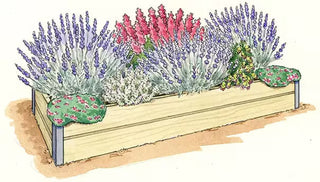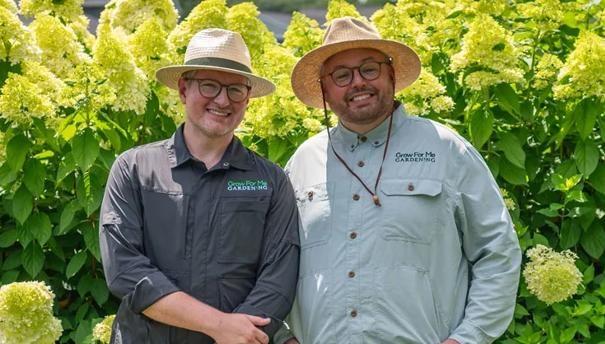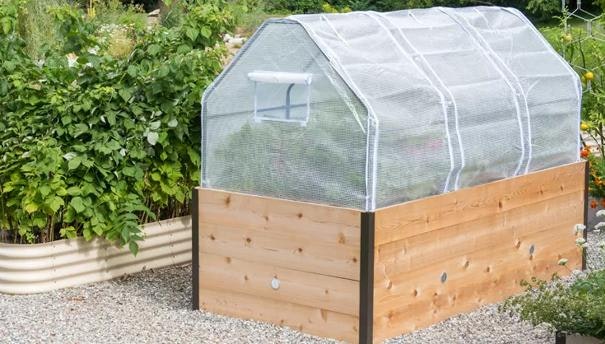English lavender (Lavandula angustifolia) is a small- to medium-sized subshrub with evergreen foliage and woody stems. It has adapted to growing in dry climates with hot summers and mild to cold winters and in lean, well-drained soils. Growing lavender can be a challenge for gardeners who live in moist climates (especially those east of the Mississippi) because it requires well-drained soil. The perfect solution is to create a "dry garden" by building a raised bed. Raised beds have become deservedly popular for vegetable gardening, but their versatility makes them useful for a much wider range of gardening uses. The key lies in using a soil mixture that's blended for the plants you're growing — in this case, a freely draining mixture that's suitable for lavender, as well as thyme, oregano and other Mediterranean herbs.
A Lavender Raised Bed Planting Plan

- A. Creeping thyme
- B. 'Sharon Roberts' lavender
- C. 'Vera' lavender
- D. 'Royal Velvet' lavender
- E. English thyme
- F. 'Amethyst Falls' oregano
- G. 'Rosita' agastache
Where to Locate Your Lavendar Garden
Lavender thrives in full sun and well-drained soil. To ensure good drainage, choose a raised bed kit that can be sited in the sunniest area of your property.
 The design is made for a 3' x 6' bed, such as the Forever Raised Bed. A smaller version could be done in a 3' x 3' bed.
The design is made for a 3' x 6' bed, such as the Forever Raised Bed. A smaller version could be done in a 3' x 3' bed.Best Soil for Growing Lavender
Once you've built your raised bed, fill it with a specially blended soil mix that is fast-draining and "lean" (not very fertile). The ideal ratio is:
- Two parts non-clay soil (for climates getting more than 40" of annual rainfall, reduce the soil to one part)
- One part coarse sand
- One part aggregate (pumice, expanded shale or 3/8" crushed gravel)
- A few shovels of compost (no more than 5 percent by volume)
- A mineral supplement, such as greensand, at the recommended rate
To facilitate drainage, incorporate some of the new soil blend into the top 6" of native soil underneath the raised bed. To calculate the volume of material you will need, use the Soil Calculator.
Why We Love Lavender
- It supports bees, butterflies, and other valuable pollinators
- Lavender is a gorgeous cut flower, both fresh and dried
- It's soothing, sweet fragrance
- It's unmatched beauty in our landscapes
Lavender and Other Plants
for Your Drought-Tolerant Garden
I recommend English varieties of lavender (Lavandula angustifolia) because they are the most cold hardy. For best results, be sure to give them plenty of room by spacing them 24" apart.
Recommended lavender varieties:
- 'Sharon Roberts': a repeat-bloomer with long, highly fragrant flower spikes
- 'Royal Velvet': a favorite of Oregon growers for dried flowers and oil
- 'Vera': an heirloom variety with exceptional hardiness and fragrance
- 'Thumbelina Leigh': a long-blooming dwarf type with excellent hardiness
 Sharon Roberts lavender
Sharon Roberts lavenderPlant other drought-tolerant, companion plants to add interest and attract pollinators like hummingbirds:
- Agastache (hummingbird mint)
- Salvia greggii 'Furman's Red' (bush sage)
- Stachys byzantina (lamb's ear)
- Achillea (yarrow)
- Thymus lanuginosus 'Doone Valley' (woolly thyme)
- Thymus vulgaris (culinary English thyme)
- Origanum 'Amethyst Falls' (ornamental oregano)




